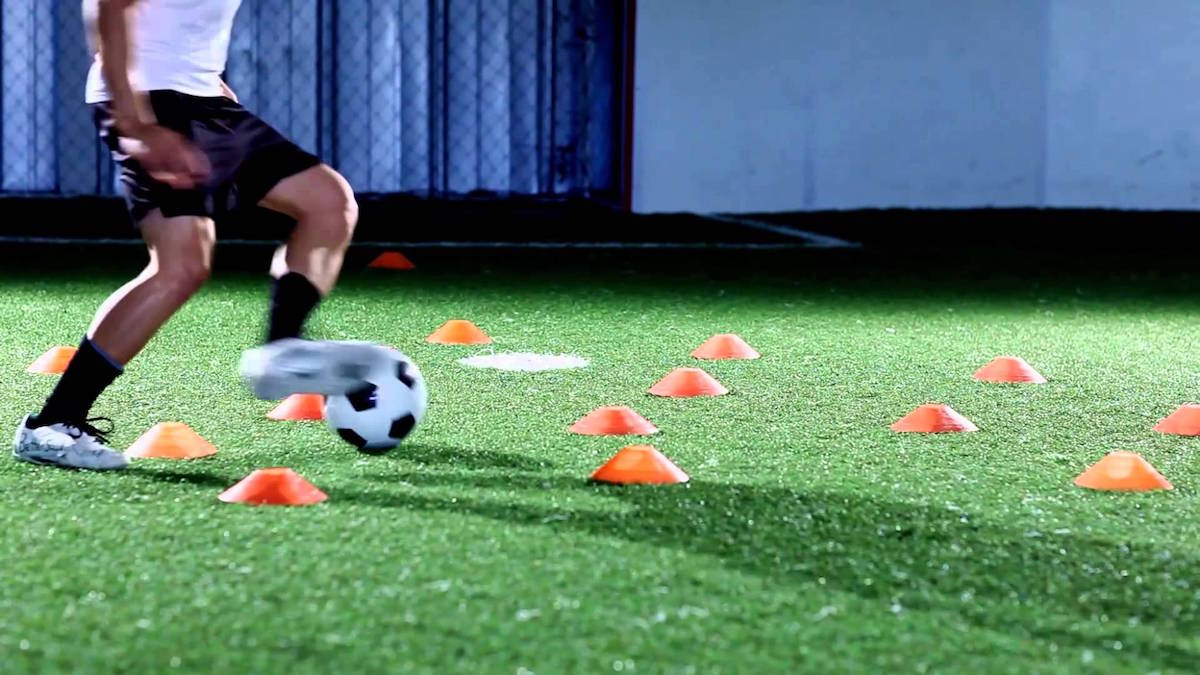Metabolic conditioning can be a tricky quality to develop with athletes. Too often we look at this as either long, slow distance aerobic training or we look at it as thrashing the athletes for a gut check. The challenge is that if we don’t put together the program in a way to address the needs of the athlete relative to how he or she experiences the sport then we have done them a disservice.
In the February issue of the Journal of Strength and Conditioning Research, Dalen et al have a smart study examining how soccer athletes experience their matches. This article examined the movement patterns of an elite Norwegian soccer team (mean age 25 years old) during all their home matches over three seasons.
To study this, the authors defined a number of movement patterns including acceleration, deceleration, walking, jogging, running, high-speed running, sprinting, These movements were recorded via sensors that the players wore, which were uploaded to computer to be analyzed. In addition to defining movement patterns, the authors studied this by position. They divided their subjects into central defenders, fullbacks, central midfielders, wide midfielders, and attackers.
Results:
When all the athletes are averaged out, there is interesting information:
- Athletes experiences a load that was reduced by 5% in the second half of the match.
- On average, athletes covered over 11,000 meters during the match. 35% of that was spent walking, 41% jogging, 16% running, almost 8% high speed running, almost 2% was spent sprinting.
These movement patterns are very different by position:
- Central defenders covered the least ground (a little over 9900 meters during the match), compared to fullbacks who covered the greatest (almost 11,500 in a match).
- Fullbacks covered the greatest ground at higher speeds. Central defenders the least. The table below compares the approximate averages to the all-player average:
| All-Players | Central Defenders | Fullbacks | |
| Walking | 35% | 40% | 34% |
| Jogging | 41% | 42% | 37% |
| Running | 16% | 12% | 17% |
| High-speed running | 8% | 5% | 10% |
| Sprinting | 2% | 1% | 3% |
- Wide midfielders and central defenders had the greatest number of accelerations and decelerations during matches; but central defenders had between 30-35% fewer accelerations and decelerations during matches.
So what does all this mean? One thing that sticks out is that high level soccer players cover a great deal of distance during a soccer match. Having said that, the movement analysis shows that they don’t need to be running 11,000-12,000 meters in training to prepare for the match with over 40% of the distances they cover being walking.
Even though there is a lot of walking and jogging, depending on the position there may be 60-90 different acceleration efforts. There may be more than 60 deceleration efforts. This is a lot different than doing 5-10 sprint repetitions to prepare for this skill. As a strength and conditioning professional, I would have loved to know if the majority of those acceleration efforts are following a specific movement pattern (for example, are they initiated after a walk?), this would make training for acceleration a great deal more specific.
This analysis also shows that the different positions are playing a different game and each of them experiences the game differently. It also means that different people are more suited to each position. The other thing this analysis does is to help guide the conditioning program by position.
Now, the limitation to the study. This is a study of one high-level team in a very specific league. That means the results don’t apply uniformly across the sport of soccer. In other words, a high school team in Mississippi is going to have a different breakdown and different needs than a professional team in Norway. That must be kept in mind.
I love studies like this. We have real athletes, a high level program, using technology to examine how athletes experience their sport. This kind of information is invaluable to a strength and conditioning coach.
Dalen, T., Jorgen, I., Gertjan, E., Havard, H.G., and Ulrik, W. (2016). Player load, acceleration, and deceleration during forty-five competitive matches of elite soccer. Journal of Strength and Conditioning Research, 30(2), 351-359.



